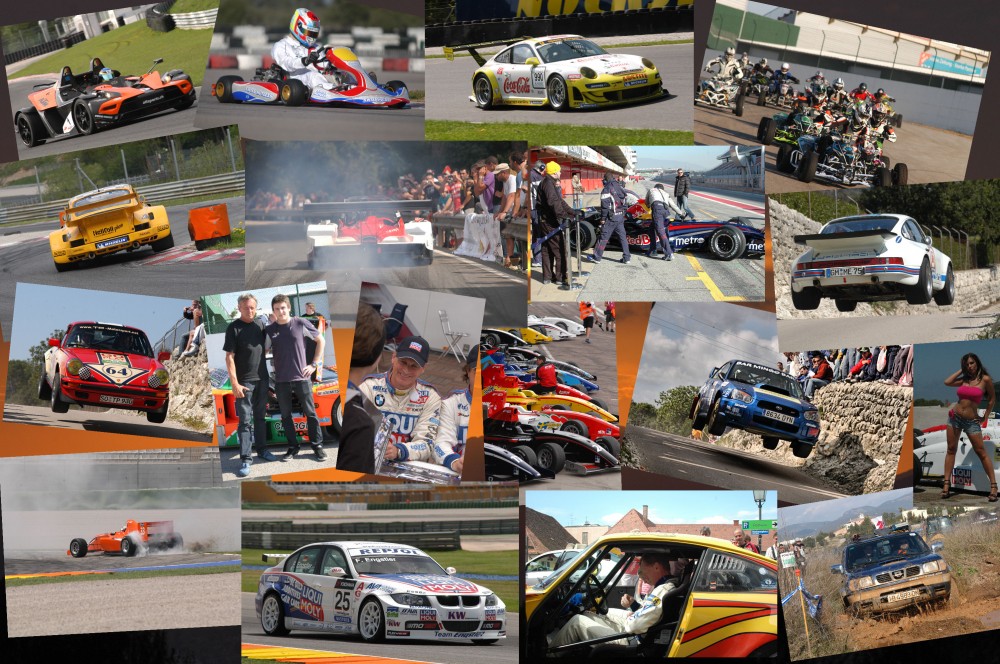Bridgestone Motorsport, the Official Tyre Supplier to the FIA Formula One World Championship, has completed its first post-season test of 2008 at the Circuit de Catalunya near Barcelona, Spain, where two compounds of 2009 specification slick tyres were used as well as 2008 specification grooved tyres.
Nine teams were present over three days of testing between 17-19 November and they made use of hard and soft compound slick tyres as well as grooved tyres. Dry conditions meant that there was no use made of Bridgestone’s wet, extreme wet or development single wet tyre. Although the weather was dry, it was cold, meaning that attaining and maintaining tyre temperature was a challenge for teams, particularly with the hard compound slick. A significant amount of data was gained with twenty-two different drivers over the course of the three days. Teams used visibly different packages, with development 2009 aerodynamic packages, interim and 2008 specification cars all in use. There was also some use of KERS systems by certain teams. Bridgestone’s Potenza Formula One tyres will next been seen in use in Jerez on December 9-11, where eight teams are scheduled to test, and in Bahrain on December 10-12, where one team is scheduled to test.
Q&A with Tetsuro Kobayashi – Technical Manager, Bridgestone Motorsport: Which tyres did Bridgestone bring to this test? “We have brought two compounds of 2009 specification slick tyres, of a hard and soft compound. We also have several compounds of 2008 grooved tyre here as well as our current wet and extreme wet tyres, and the developmental single wet tyre.” What was learnt with the slick tyres? “We already have a lot of data from previous running with slick tyres, so the test helped build on this and allowed the teams to evaluate and develop their approach to using these tyres. The weather here in Barcelona has been quite cold so teams have found it difficult to warm up and maintain the heat in their tyres with the harder compound slick. We have gained a lot of data over the three days and we are still analysing it. This is not a completely straight-forward process as there were so many variations of car specification used here over the three days, with current cars, simulated 2009 downforce cars, and cars with early versions of the 2009 aerodynamic packages. Also, there were cars with KERS systems, which are still under development. It has been a very interesting three days, particularly as we have had feedback from a five-time World Rally Champion, as well as seeing new drivers, including the very well known motor sport name of Senna out on track.”
How different are the slicks from the grooved tyres we have seen for the last eleven seasons? “Grooved tyres are a different concept of tyre from slicks and their introduction brought many challenges such as graining and a change of tyre construction. The return to slick tyres in some ways makes things simpler, and the drivers in particular have welcomed their return. Our current slicks are very different from those we last used in Formula One in the 1997 season, and we have applied the lessons learnt from eleven seasons of working with grooved tyres and from our long experience of other categories of slick tyre.” Will there be two specifications of tyre at each race next season, and how will you distinguish between them? “We will take two specifications of tyre to each race and we have worked to engineer two specifications which have a greater difference in characteristics between the two than we saw in the 2008 season. The harder tyre of any given allocation should offer very good consistency, but not enable as good an initial lap time. The softer compound should offer a very good initial lap time, but will experience performance drop-off the more it is used. It is hoped that this should provide competitors with many challenges and strategy options to encourage exciting racing. As regards tyre markings, we are still evaluating exactly what we will use.” Have you decided which compound allocations to take to each race yet? “We are still accumulating data and it will be some time before we determine the particular tyre allocations for each Grand Prix.”
What effect do the Kinetic Energy Recovery Systems (KERS) have from a tyre perspective? “There should be no difference to overall tyre performance from the additional burst of power that the KERS systems are designed to provide. This is shown by the data we have seen from the systems that have been used so far. In terms of the overall performance of a Formula One car it is quite a complex area. To be effective, a good KERS system needs to be compact and light so it does not compromise the weight ![]() distribution opportunities of the chassis. Weight distribution, of course, affects tyre performance so the designers have this in mind when they design their KERS set-ups. This is all part of the challenge of Formula One, and illustrates why Formula One is an excellent test bed for new and emerging technology.”
distribution opportunities of the chassis. Weight distribution, of course, affects tyre performance so the designers have this in mind when they design their KERS set-ups. This is all part of the challenge of Formula One, and illustrates why Formula One is an excellent test bed for new and emerging technology.”
Bridgestone Motorsport


